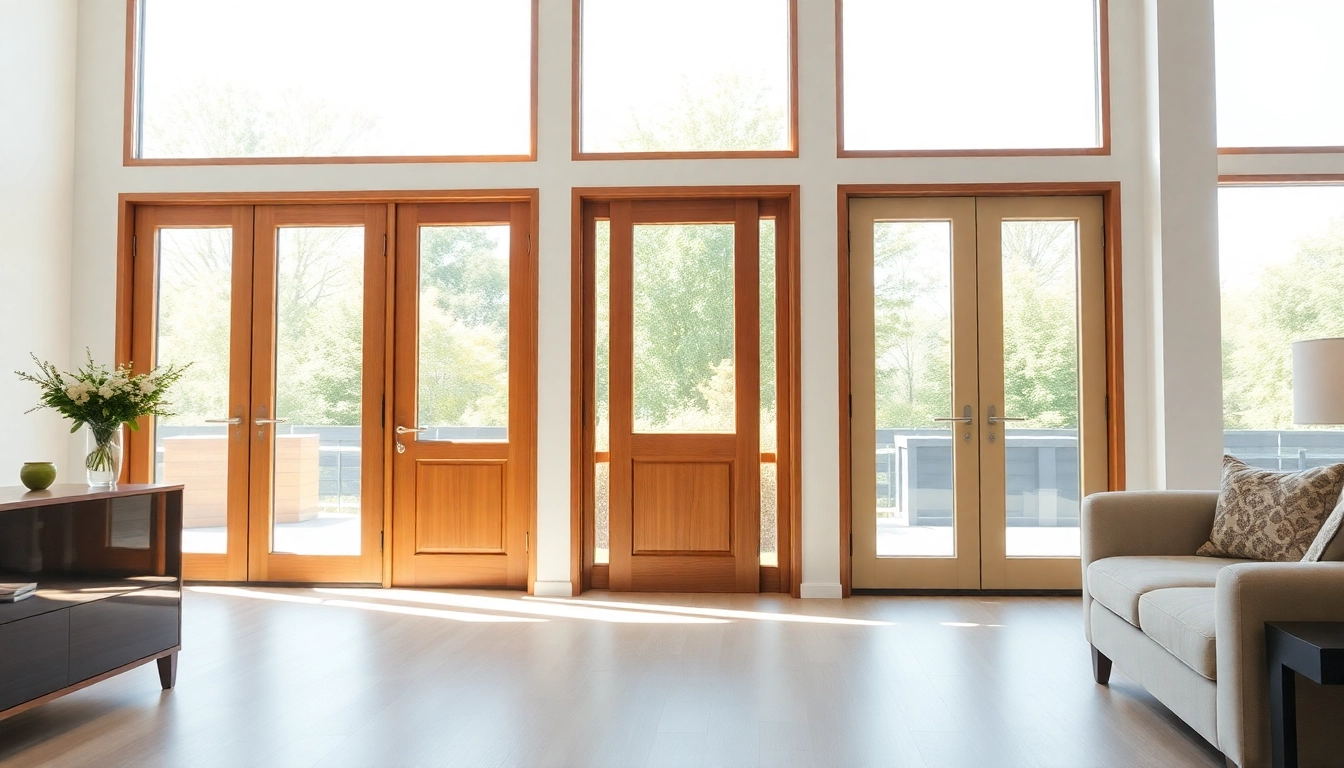Choosing windows and doors is a long‑term investment that shapes home comfort, energy use, and curb appeal. The right supplier helps translate your design vision into durable performance, while guiding decisions that affect monthly bills, maintenance, and resale value.
To anchor your project with proven expertise and a results‑driven approach, collaborate with a window and door company that blends design aesthetics with energy efficiency and reliable service. A strong partner will align product selection, installation, and ongoing support to your home’s unique climate, architectural style, and budget.
Understanding the Window and Door Company Promise
Defining the window and door company value proposition
The value proposition rests on three pillars: performance, aesthetics, and service. Performance captures energy efficiency, weather resistance, and durability across materials like vinyl, fiberglass, wood, and aluminum. Aesthetics covers color, finish, hardware, and trim that harmonize with the home’s character. Service encompasses warranties, installation expertise, responsive support, and accessible replacement parts over time.
Brand trust, warranties, and customer reviews
Trust is built through transparent product labeling (such as NFRC energy ratings), clear warranty terms, and consistent customer feedback. Warranties should address both materials and workmanship, with defined coverage periods and straightforward claim processes. Reading independent reviews and verifying the provider’s local service network helps homeowners gauge reliability beyond glossy marketing.
Common mistakes when selecting a supplier
Common missteps include prioritizing lowest upfront price, neglecting energy performance data, and overlooking installation expertise. Another pitfall is choosing a brand without local support for service, maintenance, or warranty fulfillment. A thoughtful approach evaluates long‑term value, not just initial cost, and ensures the supplier can back up claims with data and a proven installation track record.
Choosing Windows and Doors: Key Factors for Homeowners
Evaluating frame materials and energy ratings
Frame material determines durability, maintenance, and insulation. Vinyl offers affordability and resistivity to weather; fiberglass provides strength with slim profiles; wood delivers natural aesthetics but requires more upkeep; aluminum is durable with modern, minimal frames. Pair materials with energy performance metrics—U‑factor measures heat transfer, while Solar Heat Gain Coefficient (SHGC) gauges solar gain. Look for NFRC labeling and ensure assemblies meet local climate needs to optimize comfort and energy bills.
Sizing, configurations, and installation considerations
Accurate sizing starts with precise rough openings and accounting for expansion, moisture, and thermal movement. Configurations should match daylight goals, egress requirements, and ventilation needs, while installation considerations cover flashing, weather sealing, and proper slope to drain water away from the structure. A skilled installer protects interior finishes during removal and ensures a seamless integration with existing framing.
Budgeting and cost considerations for projects
Adopt a total‑cost approach: initial price plus ongoing energy savings, maintenance, and potential resale value. Consider financing options, extended warranties, and the cost of upgrades such as impact‑resistant glass or high‑performance coatings. A clear cost plan helps avoid surprise expenses and aligns choices with long‑term value rather than short‑term savings.
Style, Materials, and Performance: Matching Your Needs
Design aesthetics: finishes, hardware, and trim
Design details influence curb appeal and interior ambiance. Choose finishes that complement trim and flooring, and select hardware styles (knob, lever, finishes like satin nickel or oil‑rubbed bronze) that reflect the home’s character. Thoughtful trim options and grid patterns can subtly alter perceived scale and light diffusion, creating a cohesive look from inside and out.
Performance metrics: U-factor, SHGC, air/water resistance
Beyond energy ratings, assess air leakage (air tightness) and water penetration resistance to ensure reliable performance in adverse weather. A higher performing system reduces drafts, supports more consistent indoor temperatures, and minimizes HVAC load. Align selections with local climate data to maximize comfort year‑round.
Durability, warranties, and brand support
Durability hinges on material quality, coating technology, and hardware design. Favor brands with robust warranties, clear claim processes, and accessible replacement parts. Ongoing brand support—availability of service technicians, timely warranty fulfilment, and updates to product lines—protects your investment for decades.
Installing and Maintaining Your Windows and Doors
Site preparation and installation steps
Preparation includes protecting interiors, confirming structural readiness, and scheduling installation during favorable weather. The installation sequence typically involves removing old units, inspecting openings for rot or damage, applying continuous weather barriers, installing new units with proper shims, sealing, and verifying operation. A meticulous approach reduces call‑backs and ensures airtight performance.
Maintenance best practices for longevity
Regular cleaning with non‑abrasive products, lubricating moving hardware, inspecting seals, and refreshing weatherstripping extend life. Periodic checks for condensation, warping, or paint failure can prevent more extensive repairs. Establish a simple maintenance calendar aligned with the product type and local climate to keep performance consistent.
Service and support after installation
Post‑installation service should include a courteous follow‑up, routine inspections, and accessible channels for warranty claims. Timely contact to address operational issues, hardware adjustments, or seal replacements reinforces trust and sustains performance over time.
Measuring Success: ROI, Comfort, and Brand Experience
Measuring comfort, noise, and daylight
Comfort improvements manifest as steadier indoor temperatures and reduced drafts. Noise attenuation is noticeable with properly sealed units and laminated or multi‑pane glass. Daylight quality depends on glass type, tint, and frame size; balancing glare with natural light can redefine room usefulness and mood.
ROI considerations: energy savings and resale value
Energy savings accumulate over years, often shortening the payback period for higher‑efficiency combinations. In some markets, upgraded windows and doors correlate with stronger resale value and faster sales, particularly when energy performance is a recognized selling point. Documented performance data supports value propositions during negotiations.
Brand experience: trust, service quality, and ongoing support
The best outcomes stem from a cooperative relationship with a producer that combines clear communication, consistent quality, and reliable service. Ongoing support—maintenance reminders, prompt warranty handling, and availability of replacement parts—creates a positive long‑term ownership experience and reduces the friction of future upgrades.
